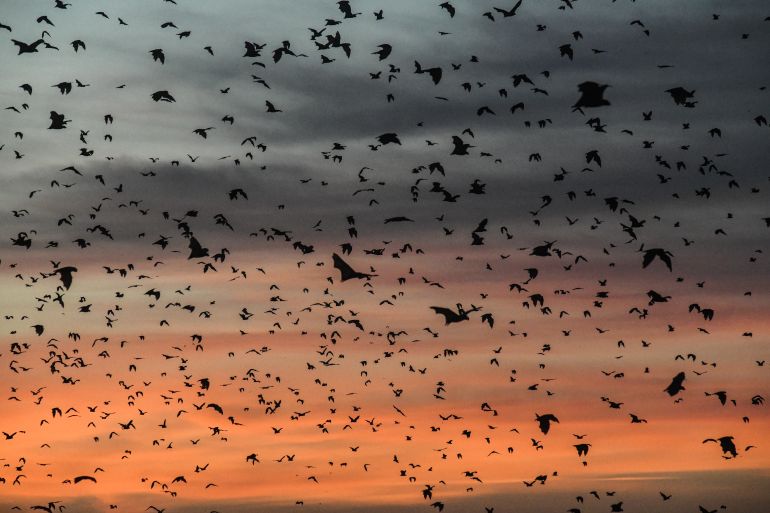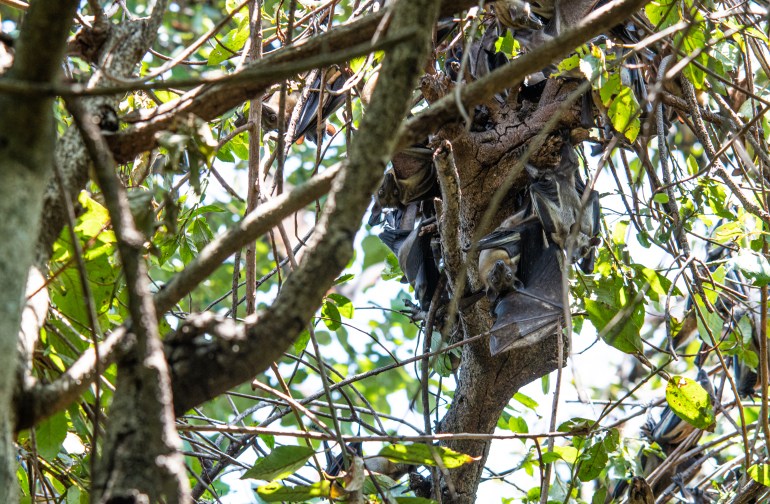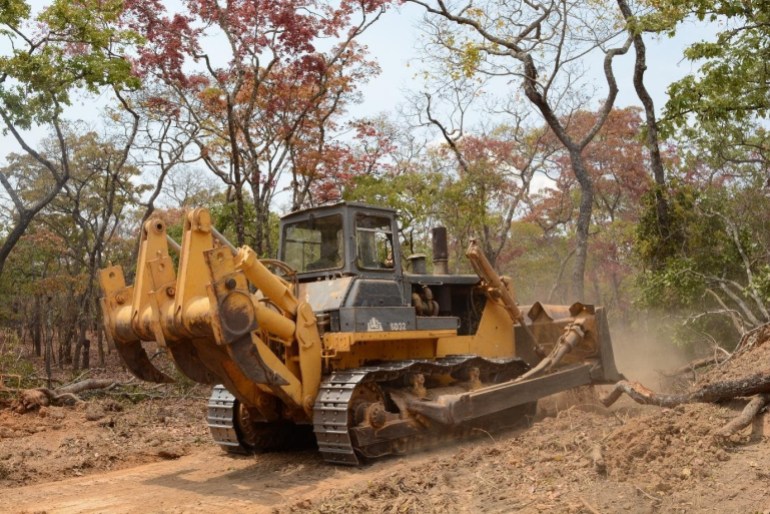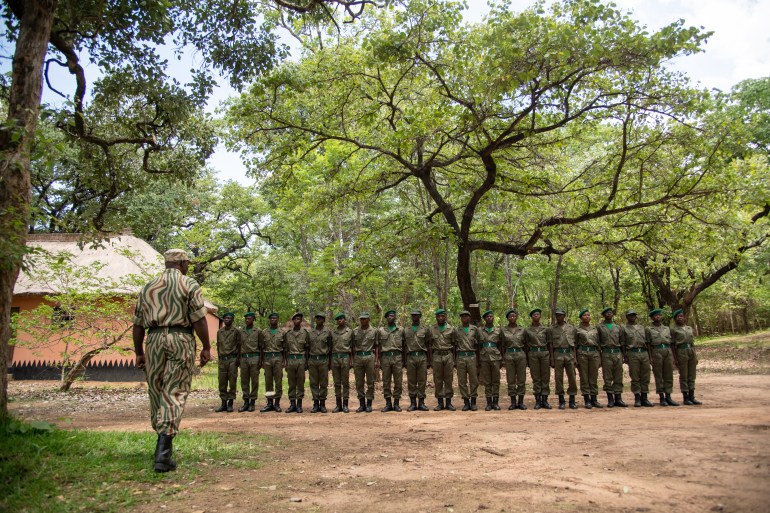World’s biggest mammal migration under threat
Experts say near-threatened fruit bats, crucial for restoring forests in Africa, are in danger.

Kasanka National Park, Zambia – As the red sun sets over a remote part of Zambia’s Central Province, the sky suddenly fills with the sound of fluttering wings and then turns black.
An estimated 10 million straw-coloured fruit bats fill the evening air.
Keep reading
list of 4 itemsDeforestation in Brazil’s Amazon surges to 12-year high
Brazil’s latest sales pitch? Come exploit the Amazon rainforest
Will Zambia be first African nation to default during pandemic?
The enormous colony – the largest mammal migration in the world, according to experts at the Max Planck Institute of Animal Behavior – is made up of Africa’s second-largest fruit bats.
During the day, the bats roost in the thick swamp along the Musola River, part of Kasanka National Park, which is home to more than 470 bird species and 100 mammals. As sunset comes, they set off to look for wild berries and fruits, covering about 50km (32 miles) and returning back to their swamp roost at dawn.
The spectacle only takes place once a year, between October and December. But experts say the near-threatened bats, crucial for restoring Africa’s forests, are in danger.

Straw-coloured fruit bats, dubbed “the gardeners of Africa”, are important for the regeneration of woodland forest and Indigenous fruit trees.
They travel thousands of kilometres as a migratory species, but much is still unknown about their migratory routes or why they congregate in such large numbers at Kasanka.
But as pristine areas and national parks become threatened, their habitats are disappearing.
Protecting the park
James Mwanza, community outreach manager at Kasanka Trust, which manages the park, says commercial agriculture is the main threat to natural resources which the bats and communities surrounding the park depend on.
Already, 10,000 hectares (24,711 acres) of pristine forest inside a 5km (3.2-mile) buffer zone around the park prohibited for development within the Kafinda game management area, has been cleared for commercial farming, according to Mwanza.
“In the game management area, humans and animals co-exist, but we ensure a buffer zone,” he said, where there is supposed to be, “no farms, no settlements, no activity”.
This is to prevent illnesses such as foot and mouth disease from spreading from wild animals and to protect the forest from illegal deforestation or poaching.
“But that’s not the way things are being done,” Mwanza said.

To prevent illegal deforestation and encroachment, Kasanka Trust has been working with the local community to enable them to legally own 60,000 hectares (148,263 acres) of forest surrounding the park.
Churchill Musungwa is a voluntary community forest guard, as well as a farmer. After seeing the forest around his home destroyed, his community was supported by Kasanka Trust to legally own the land.
“If we don’t have any trees, no forest, it’s not only us the people but even the birds, the animals – we are suffering at the same time,” he said.
Nyambe Kalaluka, environmental education officer at the trust, said other threats include poaching, illegal fishing, deforestation and unsustainable farming.
“We tried to mitigate that through community forests and other initiatives,” he said. “Around Kasanka National Park … people mostly get their livelihood out of the forest.
“So if they protect their community forest, then it is easier for them to be stewards to their children. The first step is to engage the community, we talk to [them] on the importance of having an area which is to their name, and an area where they can use as a community. They can be responsible because they can have the sense of ownership towards the forest.”
‘Alarming’ deforestation
Deforestation is a major issue across Zambia. The Center for International Forestry Research (CIFOR) in Lusaka estimates that the country loses an “alarming” 250,000 to 300,000 hectares (617,763 to 741,316 acres) of forest per year to fuel wood and charcoal production, and clearing for agriculture.
As Zambia largely relies on hydroelectric power, a recent drought has exacerbated demand for fuel, with an estimated 90 percent of the population depending on wood for energy.
Combined with population increase and overuse of agricultural land in some areas, human migration in search of virgin forest areas such as Kasanka is a natural consequence, explained CIFOR’s Davion Gumbo.

“The [deforestation] trend is upward,” he said. “It’s not only deforestation alone, but degradation … related to the qualitative loss of the forest. The loss of those materials has got an effect in terms of biodiversity,” added Gumbo, citing agricultural expansion and people opening up the forest to plant crops as the main causes.
“We would like to see communities get involved and obtain benefits from their participation. Communities … need to be educated … to see the attributes that are in these resources beyond just seeing firewood and charcoal.”
Lack of government funding for law enforcement to protect natural resources, from commercial interests as well as poverty-based activities such as illegal charcoal production, is a key challenge, said Gumbo.
“When it comes to the dollar or kwacha to support those activities on the ground, that’s where there has been reluctance.”